Try it”, Chozen Roshi beckons, “when you wake-up—kiss the Earth”.
Here we are, members of the human tribe. Long accustomed to dwelling among, within and around the human mind and all of its many creations. And now, cell phones have been silenced, computers turned off, the cars are parked, and even the walls and roofs have been abandoned temporarily, to support us as we turn toward the natural world—the Grasses, Trees and Great Earth to teach us about what it means to be truly alive.
This isn’t your typical sesshin, we are told the first night. Instead of receiving reminders in the zendo, and daily interviews with the teacher, we are cast into the forest, into the meadow, into the sky. “Listen to the sermons of the insentient,” Mushin encourages on the first night. Listen to the bird-song, to the crickets, to bamboo, to the grasses. Listen with all your senses, with your eyes, with your body, with your tongue. Listen to the Mountain Colors and the Valley Sounds.
Mountain Colors are the unconditioned body.
Dawn seeps in as bird-song, a clear yet filmy illumination, as if the morning, the valley and our own eyes are still amongst the dream-fields of consciousness. But these fields of soft light brighten and condense, as our bodies too take form and the fog scatters from the piercing glare of a fully awakened sun.
Eyes drawn into the panoramic sunrise—we too take on the colors of the valley, wearing them proudly, awkwardly, inwardly as we scamper back to our human shelter for the morning chants and dedications.
Walking, part mountain, part sunrise, part deer, part flower.
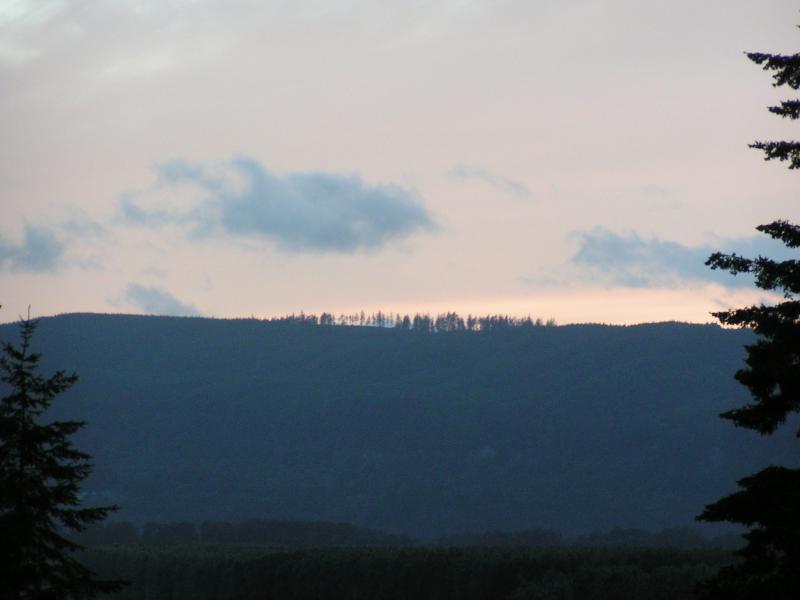
Perhaps it is the growing awareness of the climate crisis that brings 60 people together, for this our largest sesshin of the year. Perhaps it is our growing sense of alienation from the natural world, or perhaps it is our deep trust that our natural mind—present, aware, open—is mirrored in nature. Inn the generous acceptance of Earth-body, in the open embrace of clear blue sky, in the indiscriminate heat of afternoon sun, in the unadorned benevolence of old fir, or the self-less imperturbability of mountain.
Valley Sounds are the Buddha’s long, broad tongue.
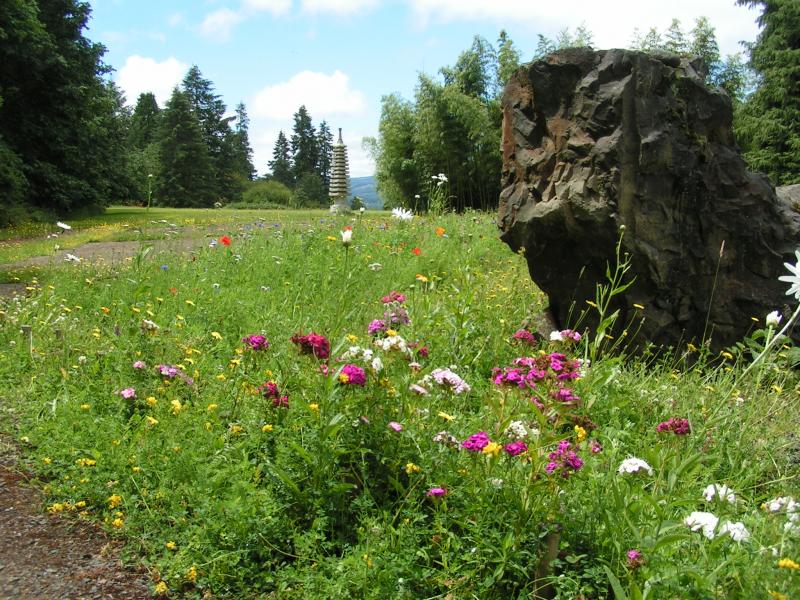
“Seeing forms with the whole body and mind, Hearing sounds with the whole body and mind, one understands them intimately.”—Dogen Zenji, Genjo Koan
“In the late afternoon there is a gentle wind, perhaps it is related to the angle of the Sun touching the Earth, ” Chozen Roshi shares, “at one point the wind entered my nostrils and breathed through me, it was like the quote from the Bible where God breathes life into the first humans–this is happening every moment.”
All afternoon, the sun illuminates the valley with its radiant heat—unbuffered by even a single cloud. Most of us retreat to the forest. Sitting amongst the trees, as the Buddha and his disciples once did. “The very first monasteries,” Chozen reminds us, “were forests.” Sitting up close to, underneath, inside of trees, breathing in their life, being breathed by their life.
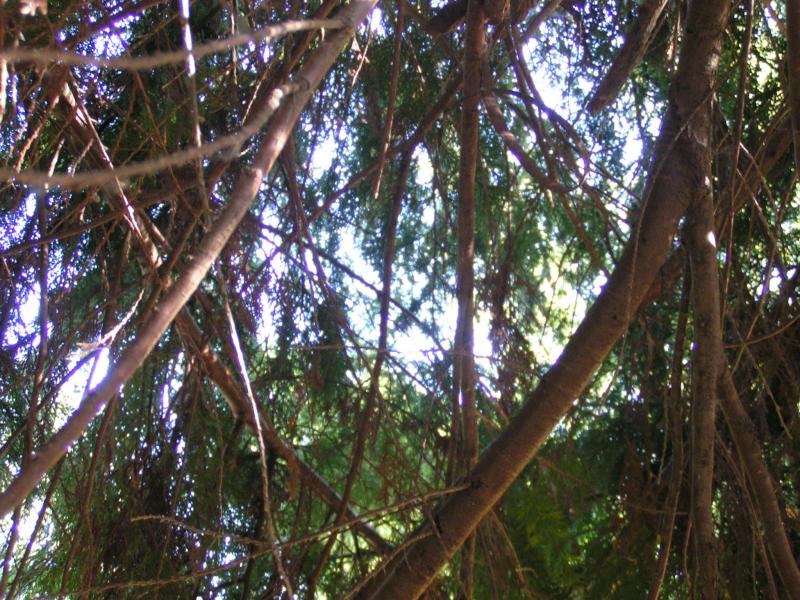
After sesshin, Gensho, a Dharma Holder and meditation teacher at Heart of Wisdom Temple in Portland speaks of the endless learning that happens in the presence of a tree. “I understand how one could sit contemplating a tree for ten long kalpas.” He says, quoting the Precious Mirror Samadhi.
Other retreat participants comment on the deep sense of stability, rooted-ness, and groundedness—yet at the same time openness and expansiveness—as if the trees had taught us something about meditation. A non-verbal demonstration assimilated, learned through keeping company with them.
“I spent hours gazing at the sky, that when I came back to the zendo, I brought the sky with me”, another retreatant shares.

The 84,000 verses are heard through the night
“Go outside into the forest after the last period of zazen, and let the Earth darken” we are told. “Sit into the night.”
It is after 9:30pm—the sun has been flirting with the horizon for long over an hour now. Arraying itself in every conceivable shade of light & sky—warm pinks fading to a blushing gray, purple cloud of illumination.
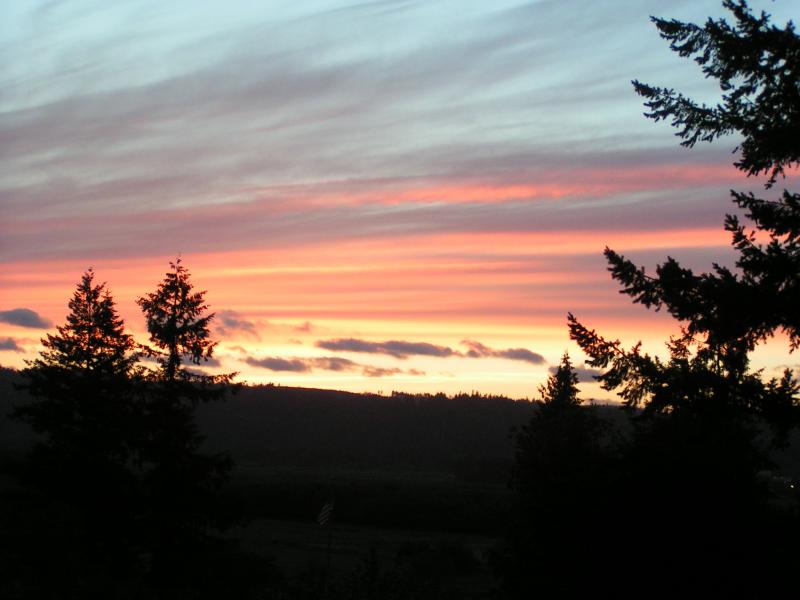
The night—a synonym for mystery—for what happens in the forest and the meadow when the earth darkens and the mountain colors become one shade. Humanness nebulous to trees, to grasses, to sky–a formless expanse singing and hearing simultaneously the ceaseless verses of the night. “The Buddha’s tongue does not take a break”—says Dogen Zenji in the Mountain Colors, Valley Sounds fascicle.
What can I say about this in the future?
“I feel simple & happy, and I know that it is not my doing” shares Jogen, Dharma Holder and Residency Coordinator at the Monastery.
“May we realize the way together with the Earth and all beings, and may we be good stewards to the Earth”
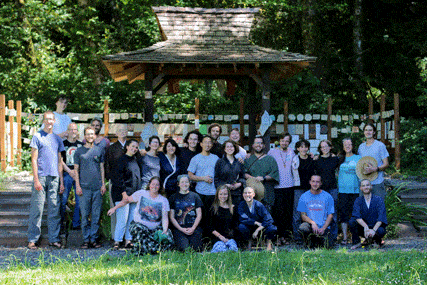
This is our aspiration. As we leave sesshin, I culled together some of the tangible ways residents and retreatants will continue to practice with the Grasses, Trees and Great Earth. Please feel free to try one or all of them.
To gaze into a flower and recognize my own beauty.
To stay connected to the Earth through my feet.
To be aware of how my actions impact the planet & environment.
To look up—into the sky, at least once a day.
To sit and gaze at the full moon, whenever I have the chance.
To be open and generous like the Earth.
To notice what in my life, comes from the Earth.
To be transparent and awake like the Sky.
To sit like a mountain, every day.
To kiss the Earth.
